The Nativity Story
 for some violent content.
for some violent content.
Reviewed by: David Criswell, Ph.D.
CONTRIBUTOR
| Moral Rating: | Better than Average |
| Moviemaking Quality: |
|
| Primary Audience: | Family Adults |
| Genre: | Christmas History Drama |
| Length: | 1 hr. 32 min. |
| Year of Release: | 2006 |
| USA Release: |
December 1, 2006 (wide) |

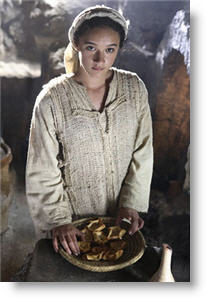
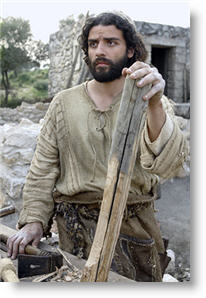
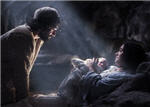
About the biblical people
- Mary, the mother of Jesus
- Virgin
- Isn’t the virgin birth of Jesus Christ mythological and scientifically impossible? Answer
- Is Jesus Christ a man, or is he God? Answer
- Mary’s other children
- Joseph
- Elizabeth
- Magi
- Incarnation of God
- Jesus
- Questions-and-Answers about Jesus Christ
- Christ
- Messiah
- How do we know that Jesus was the Messiah? Answer
- List of Messianic prophecies fulfilled by Jesus Christ
About the biblical places
- Bethlehem
- Nazareth
- Jerusalem
- Archaeology—Have any burial sites been found for the people involved in Christ’s life and death? Answer
Jesus birth and ministry
Has science disproved the miracles associated with Jesus Christ? Answer
Christmas movies
REVIEWS of other Christmas movies
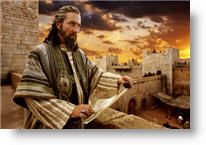

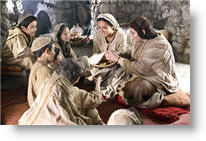
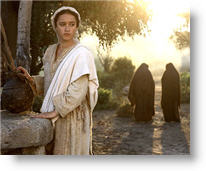
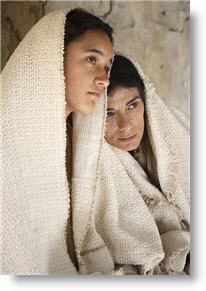
| Featuring |
|---|
|
Oscar Isaac Ciarán Hinds Keisha Castle-Hughes Shohreh Aghdashloo Shaun Toub |
| Director |
|
Catherine Hardwicke |
| Producer |
|
Marty Bowen Wyck Godfrey |
| Distributor |
“One Couple. One Journey. One Child… who would change the world… forever”
 Behind the scenes feature article about the filmmakers and cast—GO
Behind the scenes feature article about the filmmakers and cast—GOThe glory days of the Biblical epics seemed to have died out in the early 60s. When the quality of Biblical epics deteriorated, it became impossible to justify the large budgets they required. As a result, the past three decades have seen few Biblical sagas, and even fewer good ones. However, with the success of “The Passion of the Christ,” the Biblical epic may be experiencing a comeback. For example, “One Night with the King” featured a lustery performance and enjoyed moderate success, especially considering that it was not well-marketed by its secular distributor.
Now comes “The Nativity Story,” a Biblical saga about Joseph and Mary and the birth of the Christ, Jesus. It is not easy to take a person’s entire life and compress it into a two hour movie. This is perhaps why most movies about Jesus have failed to capture His greatness. However, with Mel Gibson’s “…Passion…,” it became apparent that movies are most effective when they take a small snippet of the Lord’s life and focus the movie on that brief period, allowing the characters to become more developed and less of a cardboard cutout.
By focusing on the nativity and the events surrounding His birth, the film can spend time developing the characters and “fleshing them out.” This particular aspect, however, is something that some may object to, for it requires extra-Biblical interpretations and dramatizations. Those interpretations and dramatizations are open to criticism, and each viewer should take them into account before judging the movie. For this reason, I will begin with the possible criticisms.
Too often, liberties are taken with the stories. This was evident most recently in “One Night with the King” where Xerxes is transformed into a noble and even virtuous man who falls in love with Esther. “The Nativity…” stays more true to its source. There is very little in the movie that is un-Biblical, but much that is extra-Biblical. Perhaps the greatest issue that some viewers might raise an eyebrow at is the fact that Mary was unhappy with Joseph, at first, and even says “I don’t love” him. Although she later comes to love him, the marriage is portrayed as an unhappy, arranged marriage.
Now, while arranged marriages did take place, it is highly unlikely that Joseph and Mary’s were arranged, for such marriages were largely reserved for the wealthy upper class. Even more odd is that, in such a small village, Mary should not initially have known Joseph better. It is true that the parents usually had to give their consent for marriage, but it was not common for a poor family to arrange a marriage for their daughter to a relative stranger she did not love. Having said this, the plot gives Mary and Joseph a chance to grow together, rather than having the relationship “prefabbed.” It is done to allow the director to better show their growing love, and on that level it does work. In most every other instance, the movie stays true to its source.
On a historical level, the movie is very realistic, with only one noticeable flaw. The sets, costumes, and culture were meticulously researched to ensure their authenticity, and several times throughout the movie there is a smattering of Hebrew. The printed words are also shown in true Hebrew, showing close attention to detail. One feels as if they truly are living in Judea in antiquity, and writer Mike Rich commented that Orthodox Jews who had seen the film complimented the movie for its respect of the Jewish heritage and tradition.
However, the one glaring error, which most will probably never notice, was the curious way in which the movie connects Herod to the Romans. It is true that Herod was a puppet king, under the authority of Caesar, but the Romans were wise in how they maintained control. They allowed provinces to maintain their own soldiers and guards for the king, but ensured his loyalty with a visible Roman presence. As brutal as the Romans were, they did not seek to unnecessarily stir up the populations against them, so, whenever necessary, they would let Herod do his dirty deeds with his own soldiers. In the movie, however, it is Roman soldiers throughout the movie who act in Herod’s name and perform his wishes and deeds. Romans are even seen standing guard at the Temple entrance, which, had they violated sacred ground, would have sparked riots (indeed, the revolt of 66 A.D. began when Caligula placed a Roman standard within Temple grounds).
It is Romans shown slaughtering the children in Bethlehem, and it is implied that Herod ordered the crucifixion of various political enemies. However, crucifixion was a Roman punishment, not a Jewish one. When Jesus was tried, we remember that the Jewish courts could find no cause to convict Him. Had they, He would have been stoned to death. Only the Romans ordered crucifixions. Mike Rich admitted that part of the reason was a desire to avoid the controversy which plagued Mel Gibson’s “The Passion of the Christ,” so this error is perhaps easily overlooked.
Still one other issue to address before reviewing the aesthetics of the movie is the issue of Catholicism. Many evangelicals were concerned with the overt Catholicism of Mel Gibson’s Christ, and with a movie about Mary it is obvious that many Protestants and Catholics desire to see their own view of Mary in the film. If Protestants were mildly disappointed with Gibson, then Catholics may be mildly (but only mildly) disappointed with “The Nativity Story.” There is no Mary worship, and the writer himself was concerned over the depiction of Mary having birth pangs. According to Catholic dogma, Mary was without sin. Consequently, many Catholics, but not all, believe that Mary did not experience pain in childbirth, since that was a punishment given by God for sin (Genesis 3:15). However, the Bible is quite clear that “all have sinned and fall short of the glory of God” (Romans 3:23).
Mary, like all people, was a sinner. Certainly she was more pure and innocent than most of us (and, if some say “more than all of us,” I will not object), but to deny she was a sinner, and subject to birth pangs, is to call Paul (and indeed the Holy Spirit) a liar, for “all have sinned” means there are none born of man who have not sinned. The movie is, therefore, accurate to portray Mary in labor pains.
On a cinematic level, the movie is very much a triumph in the drama genre. It lacks the action that fans of the old Cecil B. DeMille epics expect, but carries with it stronger character development and is far better at evoking emotion. For the most part, the acting is top notch. One might fault Keisha for at times lacking range and depth, for when Mary is confronted with accusations of adultery she seems too passive. Might not Mary have cried or become angry? Instead she somberly replies, “I have broken no vows.” These criticisms, however, are far too harsh, for sixteen year old girls have not had the personal experiences to draw upon to give them that depth of acting. Moreover, an outward expression of anger or sorrow may not have been as convincing as the inner somber and contemplative look which she displayed. Keisha, an Academy Award nominated actress, did a fine job, as did the rest of the cast.
What the movie does best is to develop the story that is left largely untold. We know that Mary and Elizabeth knew one another, and that they shared the joy of bearing prophetic children, but we do not know the specifics of what Mary and Elizabeth went through. In the movie, that relationship is explored. We also see Mary’s faith tested, and we see Joseph when he is confronted with a pregnant wife whom he had never touched. How would we have reacted? Certainly, we would not have believed her, nor did Joseph, but Joseph’s decision not to accuse Mary (which would result in the death penalty by Mosaic Law) showed his righteousness, not his trust in her story. These are the elements that the movie dwells upon; the long journey to Bethlehem in difficult circumstances, and the faith of two meek individuals.
The movie also enhances the plots and contrivances of Herod and the journey of the Magi. In the film, Herod is depicted as a cold, calculating man. The depiction is certainly a fair judgment, although many believe that Herod was a deranged man who was apt to fly into rages at the slightest whim or offense. The film, however, shows Herod coolly and calmly discussing whether or not the slaughter of children in Bethlehem would preserve his kingdom.
Conversely, the Magi are often a source of comic relief. One Magi is “usually right,” while another is reluctantly dragged across the desert. The scenes are, nevertheless, reverent and never over the top, although I admit that the Sahara desert with its mounds of sand doesn’t look anything like the Iraqi desert with its rocks, and it was also hard at times to believe that the Magi came from Persia. These are, however, petty criticisms. The scenes really underline the journeys of faith which each person makes. The Magi, after all, did not have trains or planes. Their journey to see a child was based solely on their interpretation of Scripture and their astronomical arts, but most importantly their faith. It was a journey that would take nine months, not nine days. Such sacrifices are highlighted throughout the film, but too often forgotten by many of us.
Parents should be advised that the movie carries a PG-rating. The Slaughter of the Innocents is done without blood visible on screen, but it is obvious what is happening, and there are scenes of crucified prisoners which might be disturbing to very young children. Some might also object to a scene showing the newborn baby Jesus in the buff (bottom showing), but the movie is really very clean morally.
The filming of this type of movie is long overdue. “The Nativity…” actually holds up as one of the best Biblical epics in recent memory. It was often compared and contrasted with “The Passion of the Christ” by its producers and by the media present at the preview, and such comparisons are obvious, but its contrasts are even more apparent. The one was a violent story of Christ’s passion and His death for our sins; the other a humble story of Christ’s birth.
Oscar Isaac, who portrayed Joseph in the film, commented, “I never realized that it was such a story about humility… look at the humbleness and that kind of love.” Oscar came away saying that he wished he could be as self-sacrificing as his character. “It is not about the rich and powerful… but about the humble.” In this day and age, it is a lesson we all need to learn better.
Violence: Mild / Profanity: None / Sex/Nudity: None
See list of Relevant Issues—questions-and-answers.



Excellent! / 4½
Excellent! / 4½
Good / 4
Excellent! / 5
Excellent! / 4½
Too often movies involving Christian subject matter are done by low budget, private film companies. It’s refreshing and long overdue to now start seeing quality films as this one, getting quality actors and set design. I saw it with an audience of all ages, and although I wouldn’t think this movie would hold the attention of young children, you could hear a pin drop in the theatre. In celebrating Christmas, I couldn’t help but wonder how we went from the nativity, to what Christmas has become. We’ve abandoned the creche for consumerism.
Excellent! / 5
The sets, costumes, and look of the film do an outstanding job of portraying places and events in the Gospel. They do a far better job than my petty imagination. And that’s the thing about good Biblical films: they are not meant to replace the Bible, but enrich it. If they give you a deeper appreciation for the Word of God and of its life-changing truths and events, then they have done their job. If they make you see something or someone in a new light, then you may discover a treasure you hadn’t found before.
I thought all the performances were well done, though honestly I was disappointed with the pretty actress that played Mary. I guess I’m too emotional and theatrical, but I thought that she could put a little more… emotion into her portrayal. The only other things that disappointed me in the movie was the angel incidents. Every time an angel came to a person in the Bible, they were always afraid. And the incident with Mary is no exception (Luke 1:29-30). I expected Mary to fall down on her knees, when the angel Gabriel appeared to her, or at least tremble, but instead she stands and stares at him calmly, carrying on a conversation with him as if he was a gardener.
However, on second thought, it’s still a great portrayal of Mary. She said herself, after all, in Luke 1:48, that God “hath regarded the low estate of his handmaiden…” God always chooses those we least expect to bring about His great will. For God to choose Mary, He chose a woman perhaps the most humble, meek, lowly, woman on Earth. It’s a good interpretation to portray Mary very subdued and low-key. It shows her humility.
I thought the best performance was done by the actor that portrayed Joseph. Joseph is shown as devout, sincere, godly, and humble. You really believe that he cares for Mary, and it’s wonderful when you see him talk about he and Mary raising Jesus. 'I wonder if I will have to teach Him anything?' he humbly asks.
The film does a great job, I think, of showing why God pick these two individuals to bear His Son. They are both people of character, faith, and humility, and they would be the last two people you’d notice in Jerusalem. The greatest people are probably those who are most overlooked.
My nit-picks, I hope, are minor and non-aggravating. The other angel incident that I wished was done better was towards the end. When the angel appeared to the shepherds in the field, the Bible says in following verses, that there was a multitude of the heavenly host praising God, and saying, “Glory to God in the highest, and on Earth peace, good will toward men.” I must say, I really would have like to have seen that. Instead I get one angel mildly proclaiming the birth of Christ, and a couple of interested and captivated shepherd men, though not overawed or afraid. However, this may have been done to try to keep the viewers’ main focus on the film’s main attraction which is Christ. If that is the reason, then more power to them! All in all, ignore my nit-picks, and go see the film. It is truly great and wonderful because it is what Christmas is all about. If Christ was not born, if God had not come into this world, there would be no salvation for man.
Excellent! / 4½
The actual birth of Jesus was one of the best scenes in the movie, and also one of the most moving in cinematic history to me. The scene where Jesus is finally born was indeed a beautiful moment, and it made me think, “This is the one—the guy that would save us, God the Son, born as a man.” It was just an indescribable scene of love, joy and pure beauty.
In comparison to Mel Gibson’s work, I actually prefer this movie. I may be one of the few Christians out there who thought that The Passion was a bad way to get the true message across, whilst The Nativity was a good way. The Passion gave out a truly negative impact, and gave out the wrong message, which was more of a negative sort. The Nativity, however, gave out a message of hope and love—and it achieved that very well. I would recommend this movie to a non-Christian, while I would find it hard to recommend The Passion in the same way. Overall, this movie was well done and well accomplished. It’s finally good to see the true meaning of Christmas!
Excellent! / 5
Excellent! / 5
Excellent! / 4½
Better than Average / 4
I’m a serious student of the Word. It is true that a few aspects of the movie vary from the Scriptures—particularly with the events at Bethlehem. I could nit-pick and complain about a number of details. But I have to to admit that they did not stray much from the nativity scene as it has come to be viewed by the church in our culture. When you buy a nativity scene at your local Christian bookstore, or when you see one set up on the lawn of a church, it almost always includes the wise men standing side-by-side with the shepherds at the manger. Not historically accurate, but sort of what we expect on one level. The makers of the movie were true to that picture. I can respect that, while teaching my own children the biblical differences.
What I most liked about the movie were (1) it clearly and unapologetically set forth the story of our Christ’s incredible birth in all of its humble glory, (2) it made a point of demonstrating how powerful and beautiful humble faith in and obedience to God are, (3) it was so real and personal, and (4) it deeply touched and moved me with pride in being a follower of Christ and with worship toward my God who loves the world so much. Any doubts anyone has about the love of God should be settled at the manger. I shed more tears during that 100 minutes than I ever dreamed a movie could evoke from me. I speak for my whole family when I say that this movie made us feel like we were there. We’re telling everyone we know to see this film. Bring Kleenex.
Excellent! / 4½
Better than Average / 4
Come on, Christian filmmakers, we can do a really GREAT job—so why not do it? This story had great dramatic potential, yet the dramatic lines were misdirected, leaving the audience to wonder if Herod is going to murder his son; and to look at the magi as buffoons—if they were so inept, then why were they together in the first place? They were scientists of the day and the filmmakers missed great dramatic opportunities in their piece of the story.
This film is a HUGE improvement over the perfectly awful “One Night With The King”, but we still need to do much better.
Excellent! / 4½
1. The Bible never says there were 3 magi, just says there were magi.
2. There was a host of angels when the angel of the Lord told the Shepherds about Christ’s birth, no host in the movie.
3. The Shepherds and magi came at different times in the Bible; in the movie it’s a free for all at the manger.
I also had issue with Mary. She wasn’t likable, Joseph was great. … With that being said, it hit on the important part, Jesus has come.
Excellent! / 2½
Excellent! / 5
Good / 4½
Good / 4
The only disappointment to me was that I would have loved to see a magnificent display of the heavenly host surrounding the stable that night. I think that would have really topped off the movie, but as a whole, I was blessed by this film. Great movie!
Excellent! / 5
Excellent! / 5
Excellent! / 5
Excellent! / 5
Excellent! / 4½
It was a new perspective to see this from the point of view of Mary and Joseph. It was such a personal experience of what they went through. (WARNING If you have not yet seen the film, a scene is revealed in the next line…) My ONLY complaint is that when the announcement of our Savior’s birth came to the shepherds only ONE angel came. I was expecting an incredible scene depicting a multitude of angels shouting with joy and exalting God. I loved the film and I feel that we Christians should support it. This will send Hollywood a message of what we Christians want. If the Passion of the Christ moved you then this movie is a MUST see. I cannot wait to buy it on DVD when it is released. I will buy multiple copies to use as a witnessing tool.
Excellent! / 5
It did get strained at times, though I was interested to see another view of Christ’s birth. Maybe the problem for me personally is about who this film was made for. If non Christians watch it, I think they will be confused by many of the hurried events …men on horses galloping across the set, while Mary is traveling to see her cousin Elizabeth; men hanging from trees on her way back home; a girl snatched by the Romans because her parents can’t pay their taxes, but none in the village offers to help contribute.
Are they all dirt poor or just afraid or plain selfish? (Obviously Joseph isn’t as poor as his neighbors.) I wanted to buy a strategy guide for the folks in the audience of only twenty total on opening night! Another surprise. Where were the local Christians to support a first night of their Lord’s birth, so to speak! Nevertheless, I got goose bumps at certain moments, such as the intimate pregnancy scenes between Elizabeth and Mary, Joseph and Mary. Joseph was portrayed very well. I liked him. As Mary with Attitude, Keisha Castle-Hughes was touching and invoked empathy, but she showed flashes of the same defiance displayed in “…Whale Rider” and didn’t always appear to behave like “the submissive handmaiden of the Lord.” The sets and scenery was good, but again fleeting and rushed over. Oh look, there’s Jerusal… ! That was five minutes in the big city with a fortune teller “blessing” the weary couple, a few short hours in Bethlehem? Like a very plump, John the Baptist’s rapid birth, a fast baby Jesus came into this world, no blood or soiled clothes, no umbilical cords. A sanitized nativity for which audience? Young, old or those who have a hard time seeing a perspiring Mary in such a position, also as a sinner in need of a Savior, and very human like us.
Keisha has beautiful presence and got that across nicely! And was the budget straining when an already sinister-looking and disheveled angel Gabriel stood alone before the shepherds representing “the heavenly host?” He kept turning into some kind of high flying bird which might have been a dove or a hawk. I enjoyed the old shepherd’s performance very much, and the traditional three wise men from the east and their dry humor and astrological arguing, but they probably arrived much too soon, by a year or two! Did anyone else notice how the cave got bigger and bigger and became the Christmas card we all grew up with? I never thought about the community shunning Mary before and her parents dismay, so a nice touch. Herod and his son, Antipas were as evil as we would expect and the Romans were as overpowering as we feared. Suddenly the holy family is on its way to Egypt to escape the soldiers' swords by a couple of seconds. No time to grab food and supplies. They’re in the desert with a lean donkey and no fish or pita bread, but wait they’re not going to Egypt, they’re heading away from the pyramids. This was the Great Story, somewhat butchered by the director and writer, but overall my family liked it and in the end it did achieve the goal of presenting the nativity story most people relate to, a holy birth attended by donkeys, camels, sheep, shepherds, wise men and angels. Not a blockbuster evangelistic success perhaps, but a fair effort at telling the wondrous story!
Good / 4
Also, the three wise men were definitely present for comic relief. One wise man’s favorite saying was, “If I’m right… and I usually am…,” while another complained constantly of the journey. While they were the most enjoyable part of the film, I believe their parts were relegated to more that of “wise guys,” rather than wise men.
Another disappointment was when Joseph was attempting to find accommodations for himself and Mary—I recall the Biblical account of him knocking on several doors throughout the course of the evening and being turned away on numerous occasions because of the influx of population due to the required census. However, the movie depicts this as a 30 second race where Mary is suddenly in labor, he pounds on a door or two and finally a stranger points to an enclosed rock-like dwelling and calmly says, “That’s all I have.”
I also didn’t think Mary was subjected to an arranged marriage as she was in the movie. The Bible does mention that “…Mary was betrothed to Joseph…,” but my interpretation was that meant that he had proposed marriage, and she had accepted his offer.
Finally, although this has nothing to do with the film, I am aghast to learn that the actress portraying Mary (Keisha Castle-Hughes) became herself an unwed, pregnant woman at the ripe old age of 16. Hmmm… not a shining example for someone whose last role was the Virgin Mary. But it is her personal life.
Good / 3
Excellent! / 2
Secondly, when Zechariah holds up the slate supposedly saying, “His name is John,” there is an error. There are two possibilities: either he has written “her name is John” in Hebrew or “his name is John” in Aramaic (the letters for each are the same). The first would be an obvious error; the latter would be a continuity error, because the characters speak Hebrew rather than Aramaic in the rest of the movie.
Thirdly, the prayers are anachronistic because they use “ha-shem” (typically mispronounced “Va-shem” by the actors) as a circumlocution for the Divine Name in Hebrew—a modern practice of many Orthodox. Unfortunately, the people of that time used a different circumlocution—'Adonai.'
Fourthly, no one would have crossed the desert to get to Judea from Persia. Rather, everyone followed the trade route around the desert to the north and proceeded down the old “Kings’ Highway” from Syria towards Judea. Likewise, the approximately 80-mile walk from Nazareth to Bethlehem is not a walk through sandy desert, but would have followed a commonly-used pathway. The real risk would have been bandits along the road, not hunger or the length of the journey.
While the movie did have its redeeming qualities—most notably in its depiction of Joseph’s struggles with how to deal with the problem of Mary’s premarital pregnancy, I was disappointed in its overall lack of attention to detail. Those I listed above are some of the more glaring examples of this lack.
Good / 3
None
Mary did not love Joseph in the beginning, but she came to love him because he believed her. Throughout the movie, Mary and Joseph bonded even closer and eventually came to the point were they did not want to be without each other. This story really showed how Mary was able to believe God and how God protected Joseph and Mary from harm so His Son could be born. It was a story of trust, love, and belief. I have never seen a better movie than this.
Excellent! / 5
Excellent! / 4½
Excellent! / 5
I began working at the theater earlier this year. Ever since then, I have seen some pretty bad movies enter our doors and watched as great movies passed by. Within the past two months, several customers have called, asking if we would be getting movies such as “Facing the Giants” and “One Night with the King.” Sadly, I have had to tell them no. When the previews for “The Nativity…” began showing I became very excited. I knew it was a movie I wanted to see.
After so many disappointing phone calls and upset customers, I knew that this movie was one that could do very well. People seem to be ready for it. Satan tries to make us think that we are alone in our faith and stand a small chance against the world, but God always sends a reminder that we are not alone—the phone calls were mine.
After reading the novel a few weeks ago, my hopes for the movie only grew. About a week ago, I asked my manager if he thought there was a chance we might be getting it. Amazingly enough, he was also very anxious about “The Nativity…” and said we certainly should; it should do well. When I was finally sure we were getting it in our theater, I volunteered to watch it (as if none of my managers wanted to, also!).
It was one of the best movies ever made on Jesus' birth. Although we have all heard the story a million times, this movie is a great awakening. Although we can repeat the story word for word within our heads and speak all day on the true meaning of Christmas—how often do we ever really stop to think about it. This movie makes it all seem as real as it happened. You see Joseph and Mary. You begin to feel the way they might have felt. The actors certainly did an excellent job and the only time I snapped out of the story was when the film stopped for a second.
They made it more real, and unlike some films, they did not have to make up or add to the story. There really isn’t anything that makes you stop and question the movie.
The only thing, about this movie, is that you have to have an open heart. You have to want to listen and know the truth. You have to want the truth and be willing to accept it. You cannot go see this film only to attack the acting and scenery. For those who are searching for the truth—this film can definitely set them on the right track. For those who already believe, be ready for an awakening. We can all fall asleep sometimes.
* And just for the record, “The Nativity…” was doing very well today as far as ticket sells go. I didn’t hear a single complaint, but it did get a few compliments and thoughtful faces from customers as they left the theater!
Excellent! / 5
As far as moral quality is concerned, this movie has nothing offensive or anything like that. You’ll probably be disturbed by the Slaughter of the Innocents commanded by Herod, but this scene (which actually opens the movie), isn’t truly offensive. This is the best release I’ve seen this year as far as morality is concerned. This one of the reasons why it deserves our great support. We need to send a message that we prefer that there would be little or no offensive content in our movies. Who knows? Maybe Hollywood might get the message that we and even many non-Christians have been sending them for years. That is: we don’t like all the violence for the sake of violence, the gratuitous and immoral sex, the needless stream of profanity (most importantly, when they take God’s name in vain), the anti-Christian content, and the various other kinds of offenses they throw at us all the time.
As far as movie-making quality is concerned, this is still the best I’ve seen this year. The acting is good (though not as good as “The Passion of the Christ”'s acting), the script is good (even though sometimes you can’t understand what certain people are saying, which is probably due to the accents the actors take on) the music is good, the background is beautiful, the costumes are believable, and the cinematography is great. The reconstruction of Nazareth, Bethlehem, Jerusalem, Masada, and various other places that aren’t named are done extremely well (Jerusalem looks beautiful and it almost reminded me of Minas Tirith from LOTR: Return of the King). This, combined with various other factors I mentioned above, makes it actually seem like your back in the days before Christ came into the world.
In terms of Biblical accuracy, this movie is rated high, but not quite as accurate as “The Passion of the Christ.” There are some minor discrepancies that the reviewer mentioned, but these don’t classify as anything that would be disconcerting. Of course, being about the Nativity, this captures the true meaning of Christmas. Various Biblical quotes used in the movie (as well as other things, such as the gift of myrrh and the thing said by one of the Magi after it was given) constantly remind us about why Jesus came and what He was going to do. For these reasons, He came into the world, and that is why we celebrate Christmas. Needless to say, I highly recommend this movie.
Good / 5
Good / 4
Excellent! / 3½
One of the things I REALLY liked about the movie was the depiction of Mary and Joseph’s journey to Bethlehem. A lot of the time before seeing this movie I thought that it was just a nice little journey to Bethlehem with nothing to worry about (of course there is nothing to worry about with God on our side) but Mary and Joseph were short on food, their animal was getting weaker as the journey went along and other things like that. The acting in this movie is very good, I was really impressed with Oscar Isaac’s who played Joseph, he did a FANTASTIC job as him, Keisha Castle-Hughes who played Mary was good to but not as good as Oscar Isaac’s. So if you’re looking for a Christmas movie to see this month don’t see “Santa Clause 3: The Escape Clause,” see “The Nativity Story” which has the true meaning of Christmas in it, celebrating Jesus Christ’s birth.
Good / 4½
I especially enjoyed that Mary and Joseph were Arabic, because that is their race in the bible. I had gotten annoyed sometimes, when Mary and Joseph were portrayed as blue-eyed and fair skinned, because they probably weren’t. I am not racist or anything, I myself am fair skinned. But I did love that Mary and Joseph seemed so much closer to who they really were.
And for those of you who complain about the three wise men being funny, who is to say that they didn’t have a sense of humor? Jesus himself had (And has) a sense of humor. I found it enjoyable that they had fun, and even Joseph has a few funny lines. It was cool because really, they couldn’t be serious all the time could they? Why would God create laughter if we weren’t allowed to use it? It was refreshing. Also, as for Joseph knocking on a few doors in “30 seconds” as you said, he probably would have been frantic at that point. Mary is in labor and he can’t find anywhere to stay, would you be incredibly calm and slowly walking door to door? No.
All that aside, this is an amazing movie, and it has become one of my favorite movies. I am taking my family to see it, and me and all the girls from my bible study loved it. Satan doesn’t want people to see this movie, I truly believe that. So take people to see it! You won’t regret it! And bring a box of tissues, I was crying quite a lot during the movie because it was so moving. I got the chills when I finally saw the baby jesus, because it felt more like I know Mary and Joseph now, and I got to see their real struggles. Take your kids to see it, it’s the true meaning of CHristmas. You won’t regret seeing this movie.
Excellent! / 5



My Ratings: Good / 5